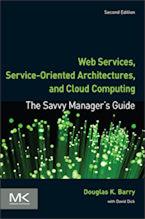Data Center Markup Language (DCML) Interest Group
The DCML Interest Group is an open, independent, vendor neutral, non-profit corporation formed to create an open, freely licensed specification, Data Center Markup Language (DCML), and to encourage its broad adoption. DCML provides a structured model and encoding to describe, construct, replicate, and recover data center environments and elements. DCML is designed to provide a mechanism to enable data center automation, utility computing and system management solutions to exchange information about the environment to make utility computing a reality. In addition to developing specifications, the organization intends to work with formal standards bodies, enable and administer certification and compliance programs, and perform user and market education.
DCML specifications described on this site:
- Utility computing efforts, see Computing Environment XML
More information: DCML website.
Context for Data Center Markup Language (DCML) Interest Group
Related Articles for Data Center Markup Language (DCML) Interest Group
- Business Process Modeling Initiative (BPMI.org)
- Distributed Management Task Force (DMTF)
- electronic business using eXtensible Markup Language (ebXML)
- Information Technology Research and Standardization Center (INSTAC)
- Internet Engineering Task Force (IETF)
- Java Community Process (JCP)
- Liberty Alliance Project
- Object Management Group (OMG)
- Open Applications Group, Inc. (OAGi)
- Open Geospatial Consortium (OGC)
- The Open Group
- Organization for the Advancement of Structured Information Standards (OASIS)
- RosettaNet
- Web Services Interoperability Organization (WS-I)
- Workflow Management Coalition (WfMC)
- World Wide Web Consortium (W3C)
- www.udef.com
- XBRL International
- XML/EDI Group
Author
Douglas K Barry
Principal
You may use this material for your work or classes. Reprint Policy. Be sure to check the menu at the left for other articles available on this site.
The Savvy Manager's Guide
Douglas K Barry is also the author of a book that explains Web Services, service-oriented architecture, and Cloud Computing in an easy-to-understand, non-technical manner.
Web Services, Service-Oriented Architectures, and Cloud Computing: The Savvy Manager's Guide (Second Edition)
by Douglas K Barry with David Dick
This is a guide for the savvy manager who wants to capitalize on the wave of change that is occurring with Web Services, service-oriented architecture, and—more recently—Cloud Computing. The changes wrought by these technologies will require both a basic grasp of the technologies and an effective way to deal with how these changes will affect the people who build and use the systems in our organizations. This book covers both issues. Managers at all levels of all organizations must be aware of both the changes that we are now seeing and ways to deal with issues created by those changes.

